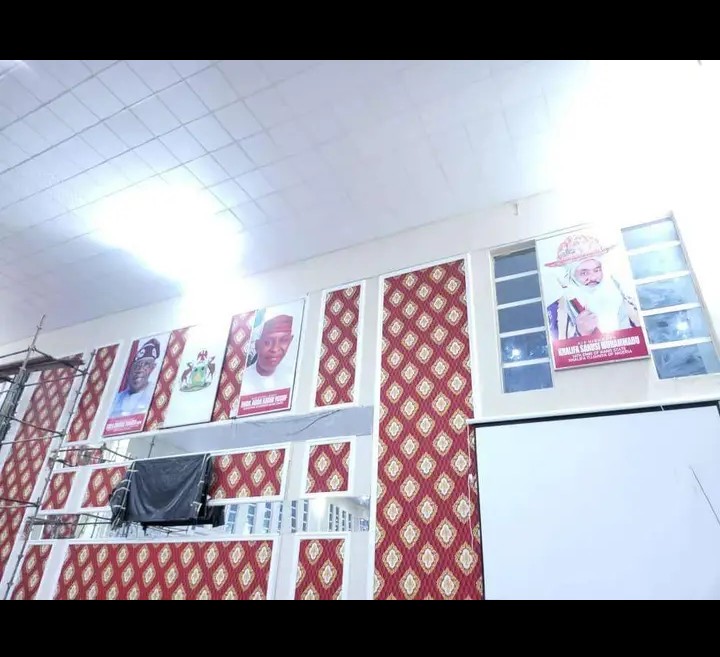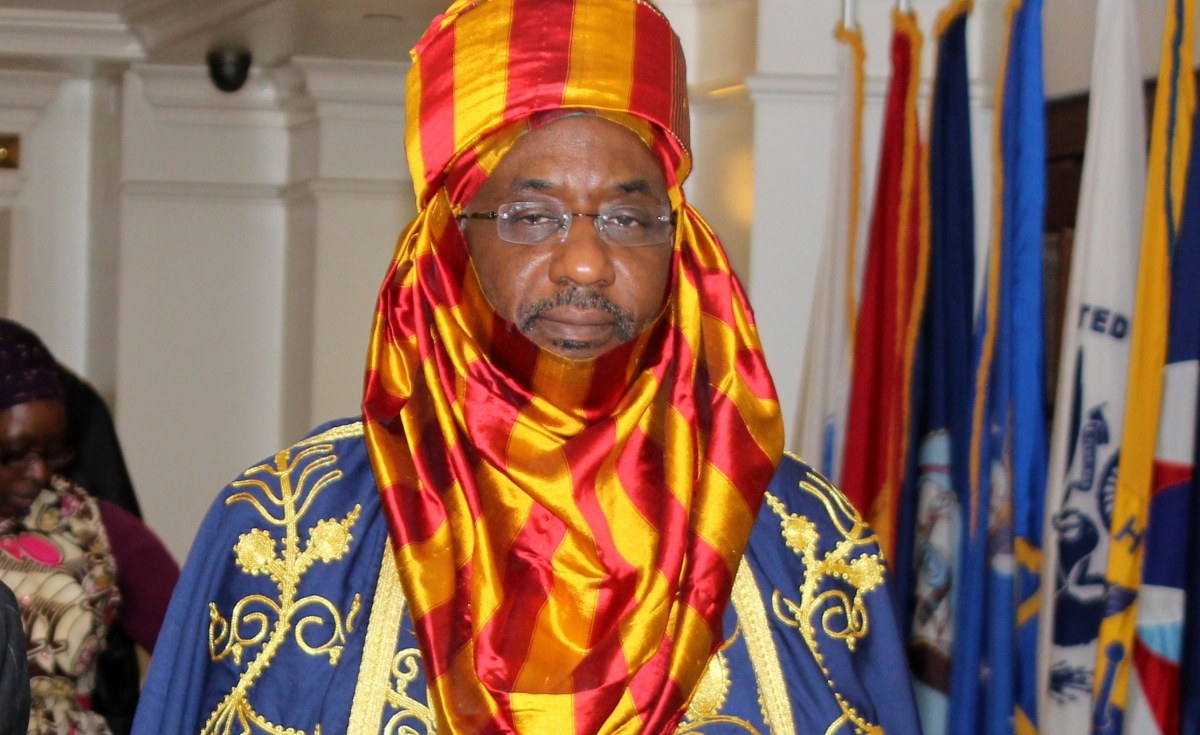KANO, Nigeria — A portrait of the 14th Emir of Kano, Muhammadu Sanusi II, prominently displayed on the coronation hall wall of Kano State Government House, has ignited widespread reactions and palpable fears in the ancient city of Kano.
The image of the dethroned Emir has since become a sensation on social media.
Speculation has been rife in the city that Governor Abba Yusuf may have plans to reinstate Emir Sanusi as the sole Emir of Kano, effectively overturning the fragmentation of the State Emirate Councils into five main councils of Kano, Rano, Karaye, Bichi, and Gaya, orchestrated by previous arrangements.

The portrait’s placement has caused tongues to wag, despite repeated denials by the state government of any intention to reinstate Sanusi.
In response to the furor over the portrait’s placement, Chief Press Secretary to the Governor, Sanusi Bature Dawakin-Tofa, explained that the display of the image was part of an ongoing facelift for the hall.
He emphasized that the portrait of the 14th Emir was returned because the hall is synonymous with him.
“The history of the coronation hall is synonymous with the 14th emir of Kano Malam Muhammadu Sanusi because it was built for his presentation of staff of office after he was crowned as the emir succeeding late Alhaji Ado Bayero in 2014 during the administration of Sen. Rabiu Musa Kwankwaso. So traditionally, his picture shall remain there forever. Bringing back the picture of the 14th is part of the ongoing rehabilitation to give the Coronation hall a face lift,” Dawakin-Tofa said in a statement.
The lingering presence of Sanusi in the political landscape of Kano, symbolized by the portrait, underscores the complex relationship between traditional authority and modern governance in Nigeria’s northern region.
The episode further highlights the tensions that have marked Sanusi’s tenure and subsequent dethroning.
While the state government’s explanation has sought to quell the rumors, the incident reflects deeper underlying political dynamics.
It reveals the extent to which symbols and imagery play a powerful role in the political discourse in Nigeria.
In a region where traditional leaders still wield significant influence, the portrait’s reappearance serves as a potent reminder of the unresolved issues surrounding the dethroning of the 14th Emir.
It will likely continue to be a subject of intrigue and debate as political alignments and rivalries evolve in the ever-changing landscape of Nigerian politics.







